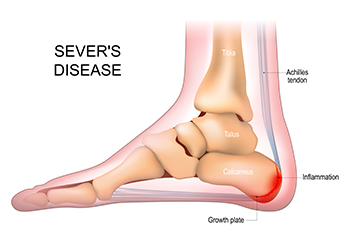

Active children often experience heel pain, a common ailment that can stem from various factors related to growth and physical activity. One prevalent condition associated with heel pain in children is Sever's disease, also known as calcaneal apophysitis. This condition occurs when the growth plate at the back of the heel becomes inflamed due to repetitive stress and strain, typically during periods of rapid growth. Signs of Sever's disease include heel pain, particularly during physical activities like running or jumping, as well as tenderness and swelling in the affected area. Children may also exhibit a limp or reluctance to participate in sports and activities they once enjoyed. Parents and caregivers need to recognize these signs and seek appropriate medical attention to manage symptoms and prevent further complications. With proper rest, supportive footwear, and guided physical activity, children can recover from Sever's disease and resume their active lifestyles with minimized discomfort. If your active child has heel pain, it is strongly suggested that a podiatrist is contacted who can diagnose and treat Sever’s disease.
Sever's disease often occurs in children and teens. If your child is experiencing foot or ankle pain, see Dr. Todd Goldberg from Complete Family Foot Care Center. Our doctor can treat your child’s foot and ankle needs.
Sever’s Disease
Sever’s disease is also known as calcaneal apophysitis, which is a medical condition that causes heel pain I none or both feet. The disease is known to affect children between the ages of 8 and 14.
Sever’s disease occurs when part of the child’s heel known as the growth plate (calcaneal epiphysis) is attached to the Achilles tendon. This area can suffer injury when the muscles and tendons of the growing foot do not keep pace with bone growth. Therefore, the constant pain which one experiences at the back of the heel will make the child unable to put any weight on the heel. The child is then forced to walk on their toes.
Symptoms
Acute pain – Pain associated with Sever’s disease is usually felt in the heel when the child engages in physical activity such as walking, jumping and or running.
Highly active – Children who are very active are among the most susceptible in experiencing Sever’s disease, because of the stress and tension placed on their feet.
If you have any questions, please feel free to contact our office located in Littlestown, PA . We offer the newest diagnostic and treatment technologies for all your foot and ankle injuries.